6 - 3D Scanning & Printing¶
Are 3D Printers Really The Future?
Tools & Assignment

Group assignment
- Test the design rules for your printer(s)
Individual assignment
- Design and 3D print an object (small, few cm3, limited by printer time) that could not be made subtractively
- 3D scan an object (and optionally print it)
Learning outcomes
- Identify the advantages and limitations of 3D printing and scanning technology
- Apply design methods and production processes to show your understanding.
Have you?
- Described what you learned by testing the 3D printers
- Shown how you designed and made your object and explained why it could not be made subtractively
- Scanned an object
- Outlined problems and how you fixed them
- Included your design files and ‘hero shot’ photos of the scan and the final object
(Copy of my 2016 website, with spelling corrections :)
Preamble¶
Thanks to my Computer Vision project I have had some experience with Kinect, as a matter of fact I posses a Kinect for Windows, which I will use to scan.
However I had never scanned nor used a 3D printer before.
Our Fifth Lecture¶
Neil introduced us the 3D printers starting from their birth.
He showed us the different existing technologies to “3D print” (which by the end of the lecture was made clear to be an ambiguous, catch-all, terminology for machines that produce object by making layers), and how we cannot afford 90% of them.
He then explained the software available and gave us a short introduction on scanning.
Testing The Limits¶
The group project was fun.
Since we had two printers I suggested we split the groups in two to test the functionalities of each separately.
Sander and Marije used the Ultimaker Original, while Eva, Shun & I used the PrinterBot Metal plus.
Using The 3D Printer¶
Cecilia thought us how to use the 3D printer, and I discovered it was quite a tedious process.
She thought us how to use Cura, a free software that controls both 3D printers.
The Ultimaker is more difficult to use then the PrinterBot, several rules need to be followed when using it and changing the filament.
PLA is the filament material we use, optimum temperature ranges from 210 to 240 degrees celsius.
First Try¶
We decided we would test the PrinterBot by using the model that Neil had shown in the lecture, so we downloaded it and loaded on Cura.
We started with making the smallest and shortest time-consuming model we could make, so our first model was set to:
(I have to go from memory since all pictures taken were blurry)
Temperature = 210 degrees Bed Temp. = 50 degrees Speed = 80-90 Estimated time = 8 min.
This printed rather quickly, but it became pretty evident quite quickly that this model was not going to be very pretty, and thus our.. My.. First ever 3D printed object looked like this :

However we must keep in mind that this model was barely larger then a coin :
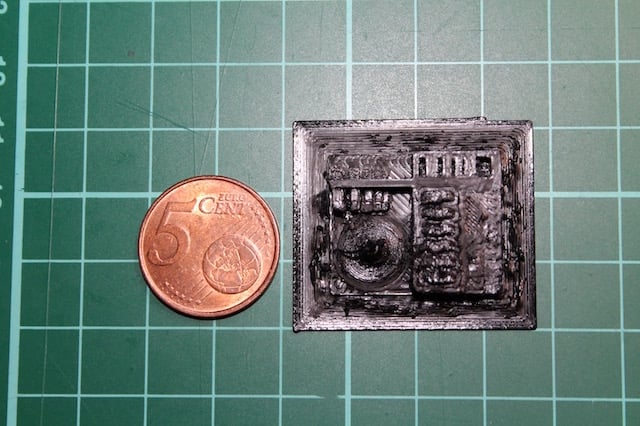
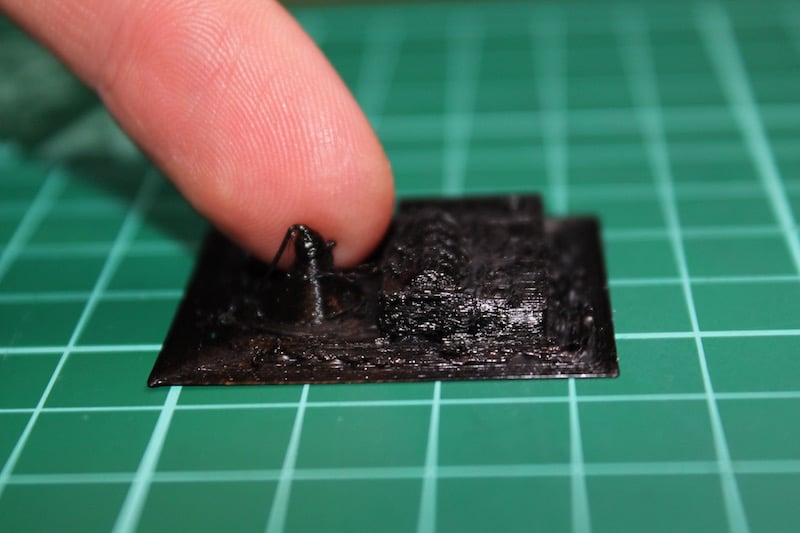
Second try¶
We decided that probably the best way to improve the looks of our model was to make it larger so we did (increasing the estimated time to 22 minutes), we also added a Brim platform which helped the model stick better to the heated-bed, the setting we used were:



Still the results were pretty bad. I guess we are indeed testing it’s limits .
Third Try¶
On the third try I decided I wanted to go wild with the setting and checkout the results (my team-mates agreed) so that I could learn more of how the plastic works at it’s extremes.
I decided I was going to increase the temperature of the bed from 50 (which we used for the other models) to 60.
I increased the size of the model once again, increasing the estimated time to 1 hour and 12 minutes.
I also chose raft for the base.

The printing was not looking very nice, so I decided midway through to drop the printing temperature to 210. This actually yielded a great outcome, resulting in a really sharp and precise top half… I settled on 210 as temperature for PLA from then on.
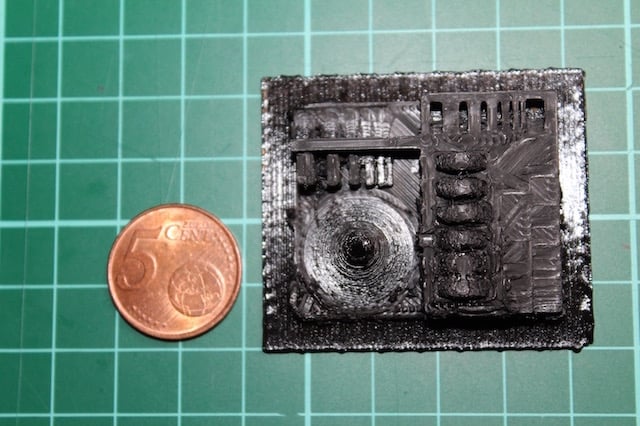
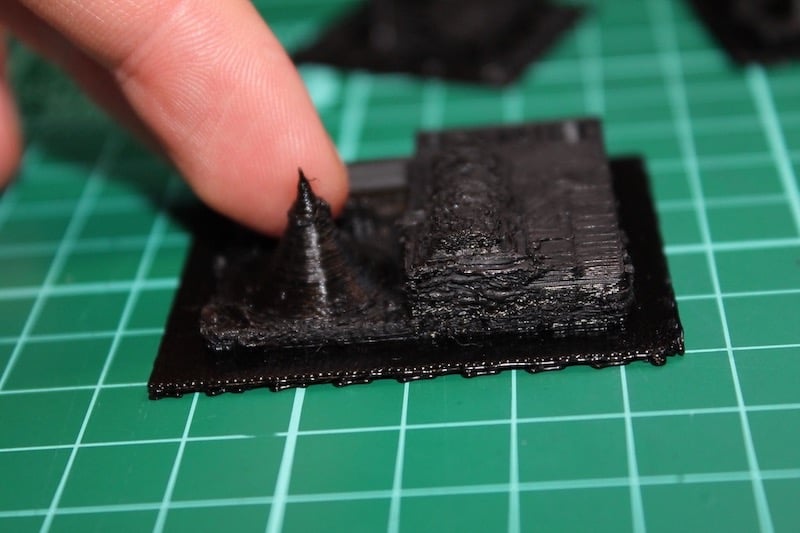
What I learned¶
Experimenting and observing have been my most important tools in understanding the limits of 3D printers.
The most important realisation I made during my learning was that the plastic is fluid. This may seem to be an obvious statement, but it holds the entirety of the weaknesses and limits of the 3D printers I was able to use.
Fluids do not have a shape and can take any form of their container, which is what allows us to mould the plastic into what we want, but because of this, the melting process of the plastic requires specific conditions, otherwise the nozzle will smear the plastic through-out the entire design; these conditions can be summed up with a single sentence; the plastic needs to stick to the desired surface.
This, sadly, is not always the case… And when the model is too small, the nozzle it self will not be able to produce the smaller details… When this is translated into layers by the software it removes essential parts to maintain the required distance between lines and line thickness, this leads to missing parts in the design, thus for each shape there is a limiting “minimum size”, the more complex the shape the larger the object must be.
In addition, due to the heat and speed of the nozzle, small walls and tiny parts will be dragged and deformed unless extreme care is taken.
In addition, if a surface is too thin it won’t withstand it’s own weight.
Notes from 2019
As a proud owner of a Ender 5 I look back at this in horror What on earth was I doing, there are all sorts of mistakes being done here. How could I ever call that “great outcome”.... I’ll show you! This particular model is used for benchmarking very specific printer properties (eg. birding, tolerance, hinges, etc.) NOT print-speed or temperature testing.
This kind of model assumes already optimized (like temperature, speed, nozzle-size) and should not be scaled up or down because it will change the nature of the test.
Overall, the right setting for PLA should be specified on the spool, by the manufacturer. I recall we were trying to get fast prints because several hours seemed way too long for a simple print, well, it turns out there is no escaping long print-times, that just how FDM works.
Anyway, these kinds of models can be terribly good for benchmarking and identifying possible upgrades for your machine.
3D Printing¶
So now we had to go make a 3D model which could not me made subtractively.
Thus I open my trusted Antimony, and with a few simple commands I was able to make a complex subtractive design. Originally I wanted to make a sphere, but this was impossible due to the nature of the Schwarz Diamond, which is constructed by squiggly lines*, and can only be printed if the base is wide and solid.
* FINE squiggly lines is a bit of an over simplification: ‘In differential geometry, the Schwarz minimal surfaces are periodic minimal surfaces originally described by Hermann Schwarz’1
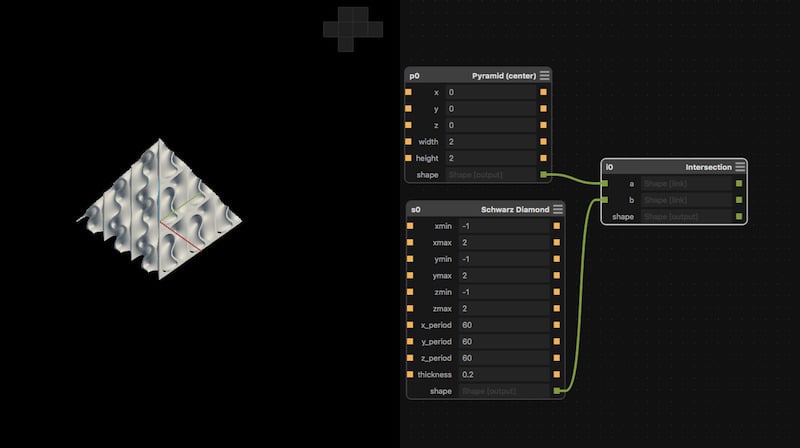
Matt Keeter
Matt Keeter produced over the years a series of apps which range from fun to vital.
Two examples of the latter are:
Through the Fab Academy everyone knows Antimony, fstl doesn’t get much love.
It’s a fast STL viewer, meaning there is no need to open slow apps (like Fusion 360) to view a simple stl file.
I can’t express enough the utility of this tool to anyone who handles a lot of STL files.
I used the Ultimaker Original to print this model.
The photos below show the pretty, yet not perfect, models I created.
I also think it’s a perfect example of something which cannot be made subtractively.
I had to clean off some residue filament and the entire construction is 3cm tall, and took 1 hour and 15 min to make.
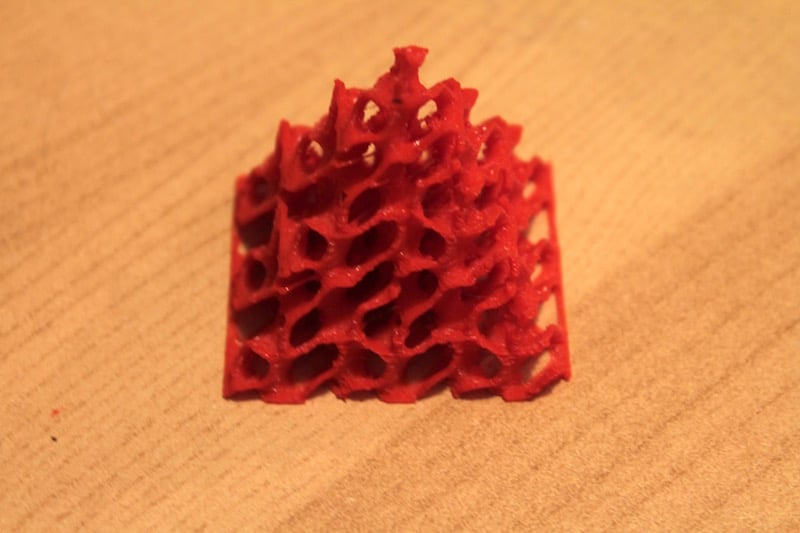
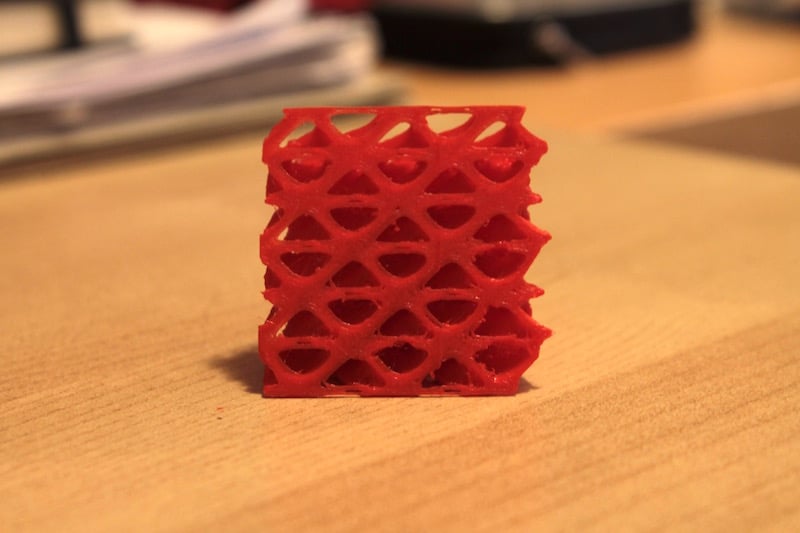
TODO¶
3D Modelling¶
I chose to make a 3D model of a small statue named “Gruff”, I used my Kinect for Windows, which is the official device for testing and developing, as well as having better sensors then the one for the Xbox.

I used Skanect to make the model, which is free-ware and is very simple to use.
However finding a rotatory base is quite difficult, and getting the kinect to go around the object is not so easy when you are confined by a wire. All that said, I am pretty happy with the results.
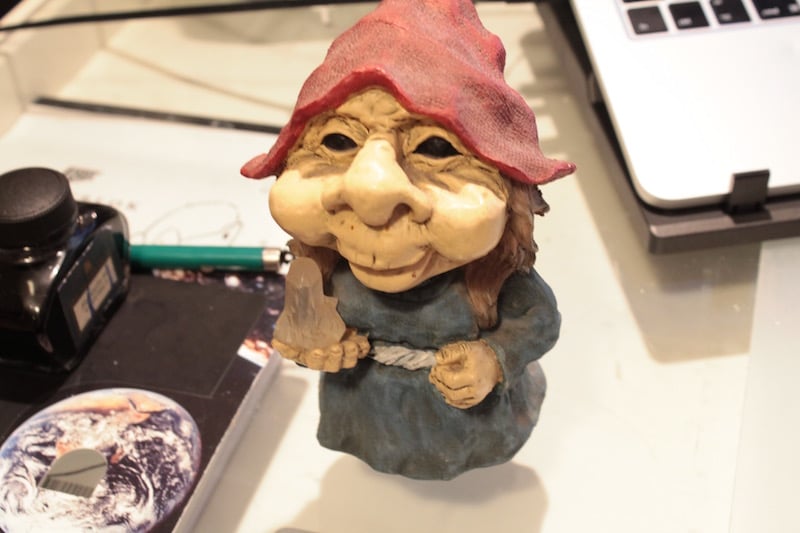
Extra Credit¶
I received as a gift a linear laser from the director of the MiniFabLab with the purpose of making my own 3D scanner, however this is quite a taxing activity and will take some time to complete by myself, I will work on it as a side project and will update on this page along the way.
This was never completed as of 2019
Download The Files¶
2019¶
I’m re-running the benchmark model on my Ender-5, with the following settings:
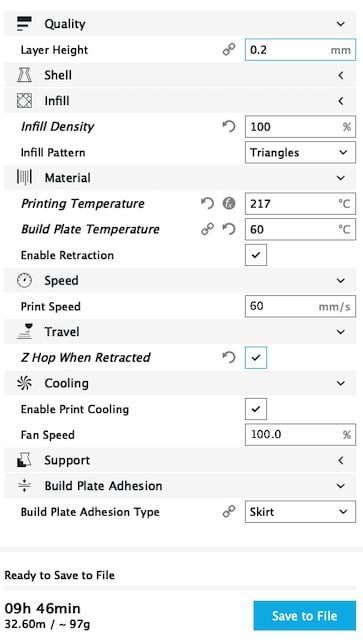
These are the results
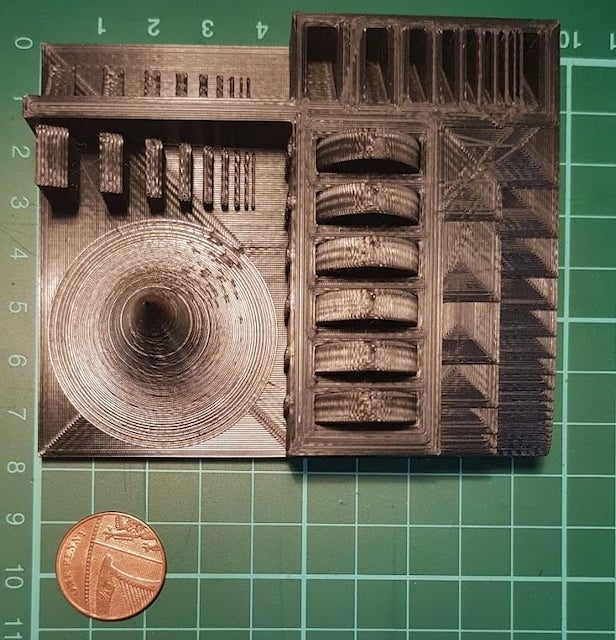
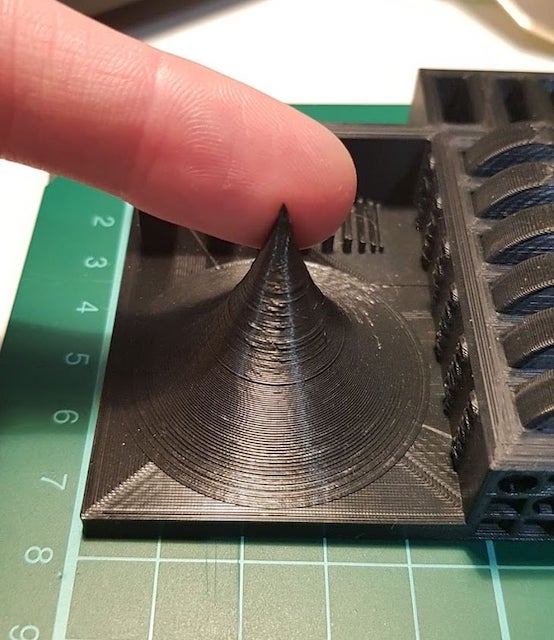
Actually, looking at it now, I figured this benchmark print isn’t really optimal. As in, it’s pretty out-dated and tests aspects of 3D printing which have reached a fairly high standard
To really “benchmark” a 3d printer some of these newer benchmarking prints are advisable:
The last one is intended to create a unified standard to compare different 3D printers.
The other students at De Waag used the following model: